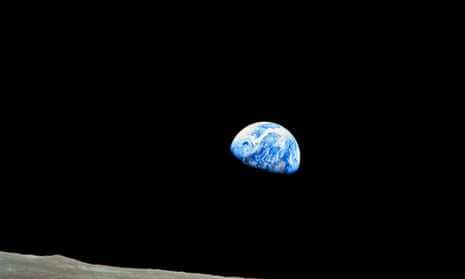The scientific question of whether we are “alone” in the universe is age-old, spanning Giordano Bruno’s ideas of the 1500s, Immanuel Kant’s writings in 1755, and, of course, science fiction. There is only one answer to this question: “No, we are not alone – and never have been.”
This week Russian entrepreneur Yuri Milner, backed by some of the world’s top astrophysicists, announced an investment of $100m into one of the most daring and important scientific endeavors ever undertaken: the direct observation of technologically advanced civilizations outside of our solar system.
It is possible that this new search, far greater in scope than any before, could turn up nothing. The universe is too big to survey completely, and science can never definitively say that we are alone, drifting through the inky black of space destined never to hear from anyone else. But finding nothing is not a failure: it will tell us whether evolvution from single-celled bacteria to the vastly complex, curious and sentient organisms that we are is common and how common it may be.
The search for extraterrestrial intelligence also prompts an even broader question: how common is life of any kind throughout the universe? We have known how to answer this for years now, due to the efforts of thousands of scientists and engineers from around the world. This question remains unanswered, because it requires a large, complex, space-based telescope – versions of which have been designed in depth. We are still waiting for a green light to proceed. The technology and building blocks for such a mission are being actively used here on Earth to study other kinds of planets unlikely to host life as we know it. As I write, several highly specialized instruments on telescopes in California, Hawaii and Chile are routinely observing and analyzing large, young planets, some similar to a nascent Jupiter.
These systems, due to complications from Earth’s atmosphere, cannot see the older, smaller planets that are similar to Earth. Directly seeing such planets enables us to find life in almost any form.
Still unseen – coded in the alien atmospheres of these much smaller planets – are imprints from the molecules and complex global chemistry that can only be explained by the presence of biological activity. Here on Earth, life has slowly and consistently changed our atmosphere and surface over billions of years to bring it to its present verdant state.
We largely know how this happened, and, through detailed analysis of the chemistry of other planets, we can identify “primitive” states in their evolution, perhaps even planets that host only single-celled life (as Earth did for at least a billion years). The fact that simple life emerged on Earth the moment conditions were ripe suggests that, as long as other such environments exist, life of some kind will arise.
Right now with ground and space-based telescopes, scientists are locating, but not directly seeing planets that probably have such environments. Thus, we are incapable of dissecting their light to reveal the imprints of life, but we know they are common — recent estimates suggest that about 10% of the stars you see at night have such planets. I have no doubt that we will find these signs of alien life on planets outside of our solar system.
(Whether we would want to have dinner with them or eat them – or whether they would want to eat us – is another issue.) We know how to find life because of the technology and science developed by the small group of planet hunters we have cultivated here on Earth. Milner’s project sets an example at precisely the right moment, when our new skills and technology can support the undeniable human mandate to find life elsewhere and forever enlighten our consciousness of who we are and how we came to be.
Fulfilling this mandate will require significant investment, far beyond what an individual can provide, roughly a hundred times Milner’s investment. This cost is less than what the US, EU and Japanese governments combined spend roughly every few hours. Spread out over ten years, that financial investment is minuscule for a priceless addition to human knowledge, not to mention the strides in science and technology and the growth of a highly-trained workforce, that would accompany such an effort.
Are we ready to answer these fundamental questions about our place in the universe? We are, without doubt, but we need the passion and dedication that Milner has shown, and for the world’s governments to step up to his example, to determine that we are, in fact, not alone. There is no other answer. Life is out there. Let’s find it.
